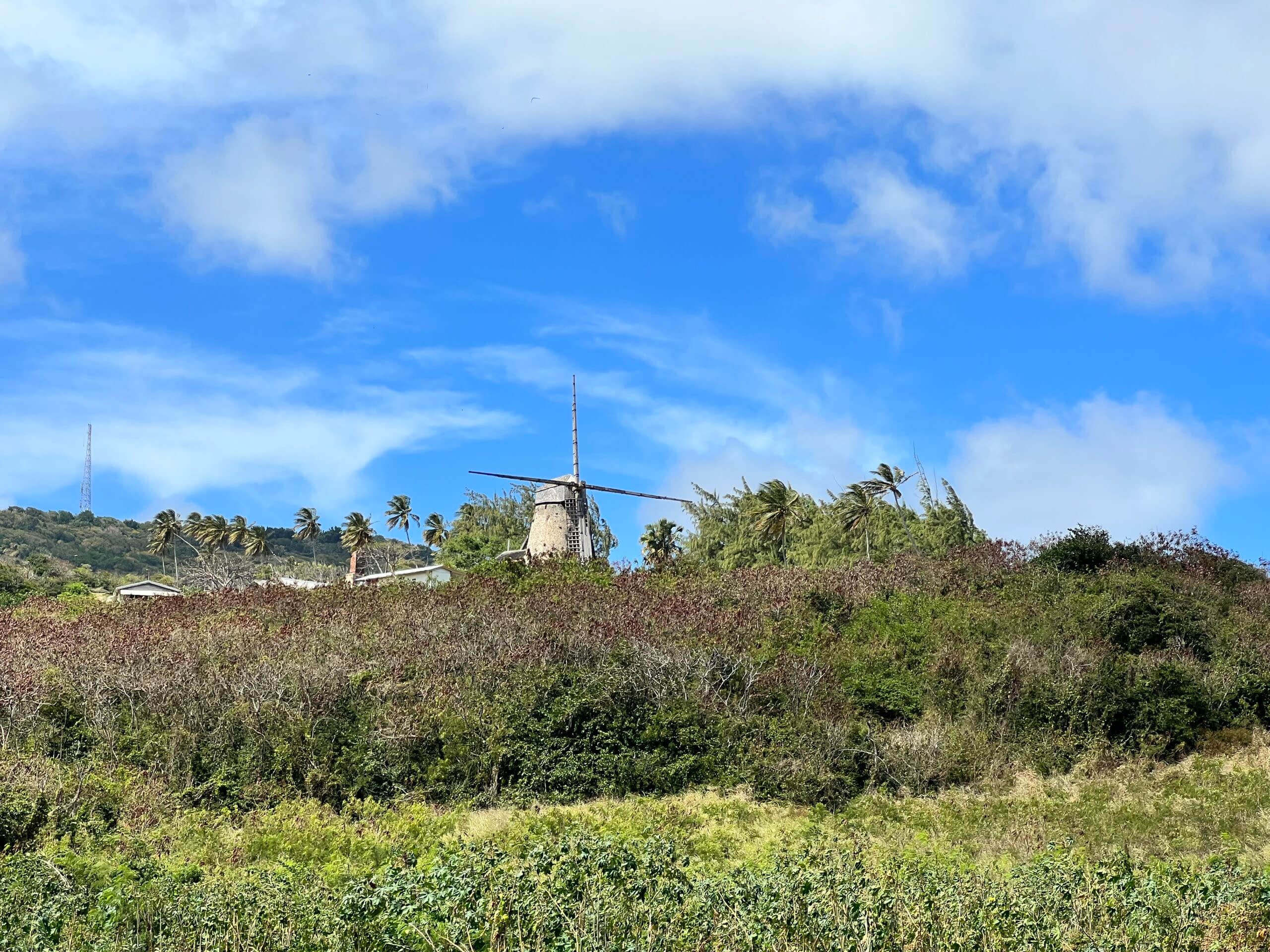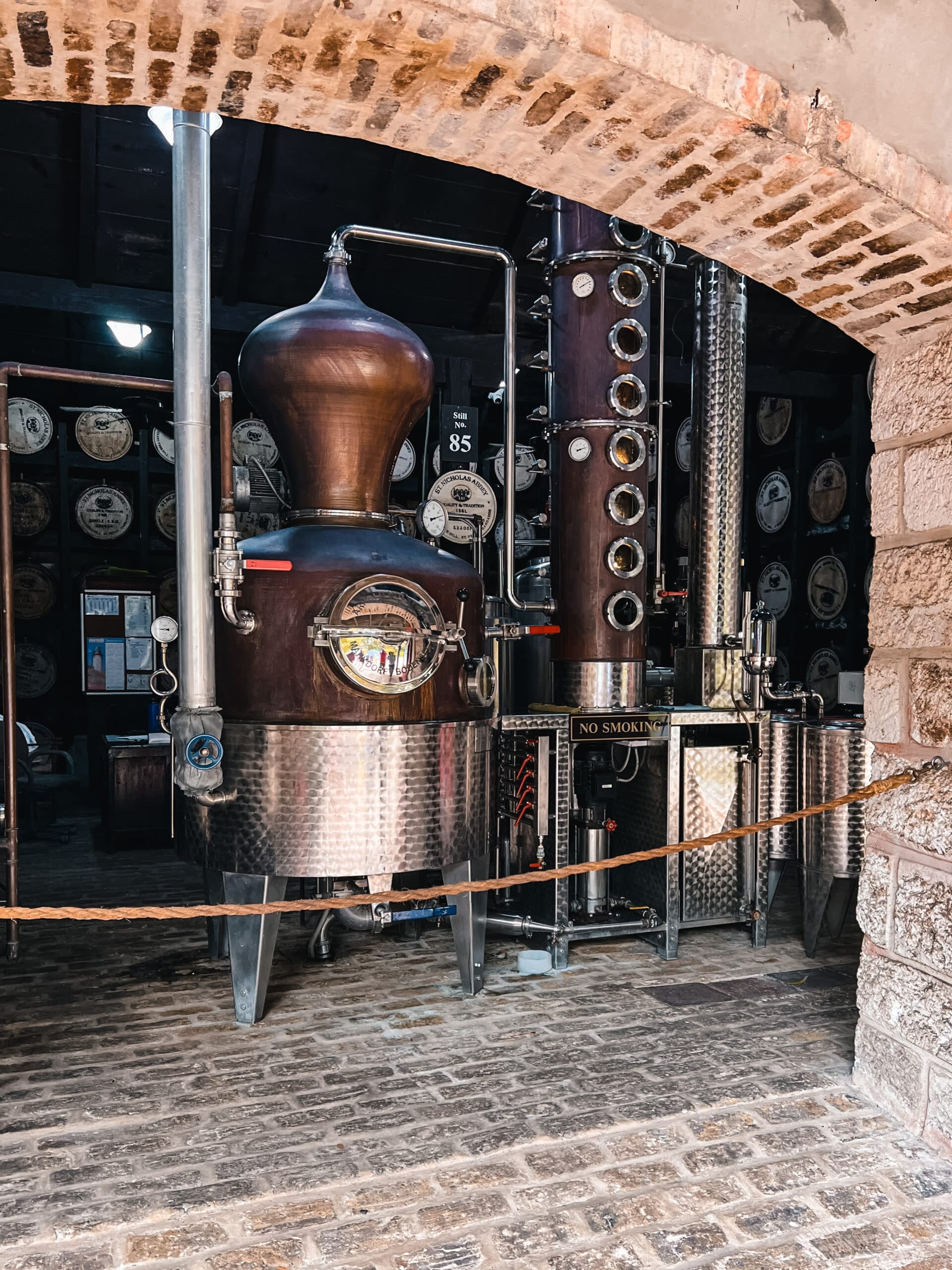Tales from St. Nicholas Abbey - part 2
Our first glimpse of Caribbean cultural heritage had so far only shown us the polished exterior. We had traveled back in time with a glittering locomotive and were welcomed with open arms in an impressive historical mansion. But the golden age of sugar production and the creation of rum was not as sweet as one might think. Now we were faced with the harsh reality, a past that many former colonial powers are still trying to sweep under the rug.
An eternal reminder
Our visit to St. Nicholas Abbey plunged us into a more dismal chapter of Bajan history. To meet the rising demand for sugar, slaves were shipped from Africa to the plantations to increase production. Slavery in the Caribbean was justified by legislation that originated in Barbados. This legislation reduced the enslaved Africans to the property of plantation owners, thereby depriving them of the right to their own lives.
St. Nicholas Abbey was no exception and made use of slavery for more than a hundred years. Tradition dictated that the slaves took the surname of the plantation owner. This made it easier to identify which plantation they belonged to. For the same reason, many current residents of Barbados carry a historical imprint in their surnames. A trace that leads directly back to the specific plantation owners who once owned their African ancestors. Therefore, it is not unusual to find descendants in Barbados with the surname Cumberbatch.
Wait, doesn’t that name sound familiar? Many have probably heard of the actor Benedict Cumberbatch, who is known from several movies and TV shows including, Sherlock and The Imitation Game. His ancestors acquired St. Nicholas Abbey in 1810 when the previous owner had left no heirs. The site’s gruesome past resonated deeply when our tour guide told us that she carried that exact surname, as a living descendant of this plantation’s slaves.

Fort Christiansborg
It turns out that the Danes played a much larger role in the cruelties of the past than we thought. Denmark was the seventh-largest slave-trading nation during colonial times and transported over 100,000 African slaves to Danish West Indies. Denmark was the seventh-largest slave-trading nation during the colonial era and transported over 100,000 African slaves to the Danish West Indies. That’s equivalent to the population of an entire municipality in Denmark. The living conditions were horrific and inhumane, resulting in the loss of countless lives.
Although Denmark was the first country to ban the slave trade back in 1792, it was primarily for economic reasons, not humanitarian. Furthermore, plantation owners in the Danish West Indies had a full 10 years to become self-sufficient. This included cheap loans from the Danish state to quickly acquire more slaves from Fort Christiansborg in present-day Ghana. It would be over 50 years before the Danish West Indian slaves finally gained their freedom.
We were both surprised when we dove into the history of slavery and discovered how active Denmark had been in the transatlantic slave trade. It makes a big impression to find oneself in the former colonies knowing how much suffering our homeland has inflicted on innocent people, and how they have been degraded to objects by our ancestors.


The great distillery
The slaves on the plantations worked night and day to grow and process the valuable sugar cane. The many hours of toil resulted in a new use for the crops. The enslaved Africans discovered a method to ferment and then distill the molasses, a by-product of sugar production. Ironically, the slaves’ own invention was both used in the triangular trade as payment for more slaves and as a means to make them more compliant.
The golden liquid quickly became popular, and production took off. I have mentioned the Golden Age of Piracy in a previous post. For me, it’s hard to imagine a pirate without a bottle of rum in hand, and I don’t think I’m alone in that. Who can forget Jack Sparrow’s famous words: “Why is the rum always gone”? Indeed, the cheap and easily accessible rum was an extremely popular commodity for pirates – both for sale and for personal consumption.
But it was not only the pirates who had a fondness for the new spirit. Sailors of all kinds were very keen about rum, which did not spoil on long voyages. An extra bonus was that the approximately 57% strong alcohol (naval strength) kept morale up aboard the ships. In the British Navy, the crew received a daily rum ration all the way up to 1970, when the British government could no longer justify letting tipsy sailors perform critical tasks.


A hellish drink
In its early stages, rum lacked the sophistication of modern distillation methods, resulting in a beverage that bore little resemblance to the smooth, rich drink we recognize as rum today. It was a crude, burning spirit that got the nickname Kill-Devil. The drink was reportedly so strong that it ‘could kill a devil’. Over time, distillation processes and storage methods improved the quality of the rum, and it evolved into the drink we know today.
At St. Nicholas Abbey, rum is produced from the estate’s own sugar cane fields. Each year, about 60 acres are harvested for the syrup production. Tradition and quality are prioritized over mass production. The sugar canes are hand-fed into an authentic steam mill, which crushes the canes to extract the juice. Similar to the estate’s own locomotive, the mill is powered by bagasse, rendering it entirely self-sufficient when it comes to fuel.
The introduction of steam mills at the end of the 19th century innovated the sugar industry. Compared to the wind-powered sugar mills, they increased juice production by 10-15%. St. Nicholas Abbey was among the first to acquire this new invention, making the plantation one of the island’s most successful producers.
However, the windmills possess a very special charm, and their old ruins are scattered all over the island. The Morgan Lewis mill stands well preserved and is still in operation, much to the delight of visitors. This wind-powered sugar mill is one of only two remaining of its kind worldwide. The other is located a short distance away on the island of Antigua.


Fine craftmanship
Once the juice from the sugar canes is extracted, it is immediately reduced to syrup. This syrup makes it possible to produce rum all year round, independent of the short harvest season. After distillation, the rum is stored in recycled oak barrels from bourbon production in Kentucky. The rum is rebarreled every three years to ensure the most consistent maturation, and St. Nicholas Abbey’s most exclusive rum has been aged for a full 25 years.
After maturation, the rums are hand-bottled straight from the barrel – regardless of the vintage. This manual approach ensures the highest quality and precision in the process. Everything from the cork, surrounded by embossed leather, to the engravings in the glass is handmade. During our tour, we even got to witness how they carefully seal the bottles after filling.
The tour had almost reached its conclusion, but the grand finale had yet to come. The current owner of St. Nicholas Abbey offered tastings of their five-year-old rum. Although rum is not normally my strong suit, I was still impressed by how smooth and complex it tasted. It did not come entirely unexpected, as my primary experience with rum was from high school parties in the company of Captain Morgan and Bacardi.


In high spirits
Rum has undoubtedly had a great significance in the Caribbean countries – and still does today. Although the Caribbean is no longer a leading exporter, you can still visit countless distilleries around the many islands. Our own visit to St. Nicholas Abbey gave us an insight into a time when sugar production was the lifeline of Barbados.
Today, rum is a cheerful gathering point with ‘Rum Shops’ scattered on every street corner, where locals meet to hear the latest gossip and play a loud game of dominoes. Here, it is just as normal to buy a bottle of rum and a bottle of soda, which are enjoyed in a 1:1 ratio, as it is to buy beer in Denmark.
Although we developed an appreciation for vintage rum, we still prefer the golden drops in a slightly different form. Mojitos, Cuba Libres, and Piña Coladas all originate from this part of the world, even though they have found their way onto cocktail menus all over the globe. Now that we are in the Caribbean, it is only appropriate to embrace the culture and taste the local cuisine… as well as its beverages.
